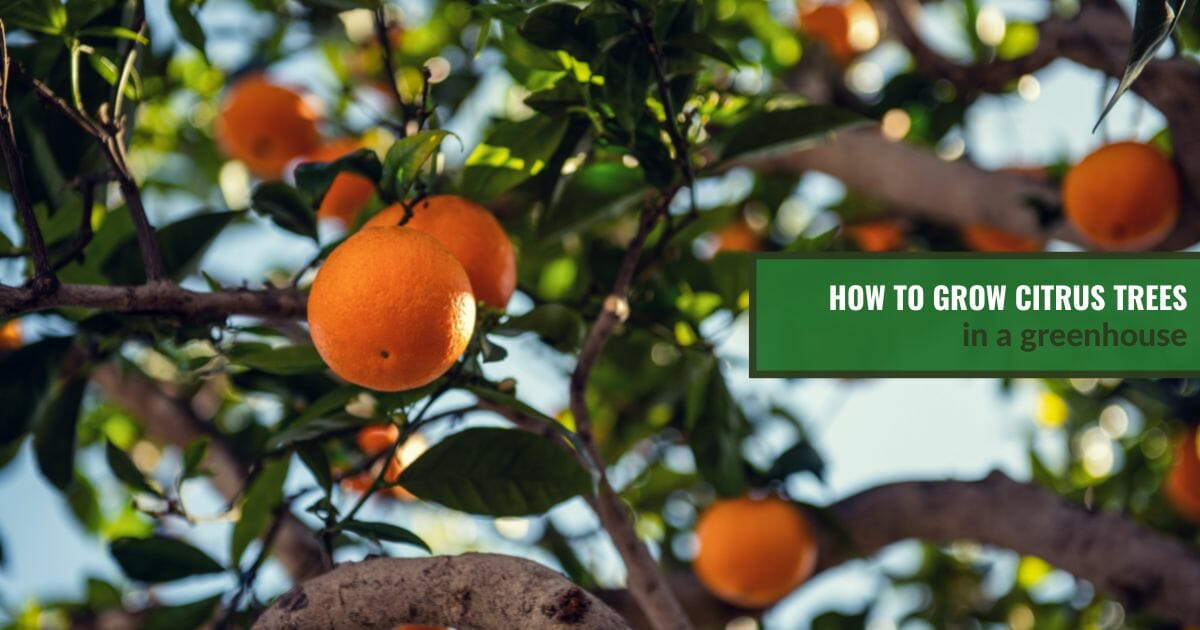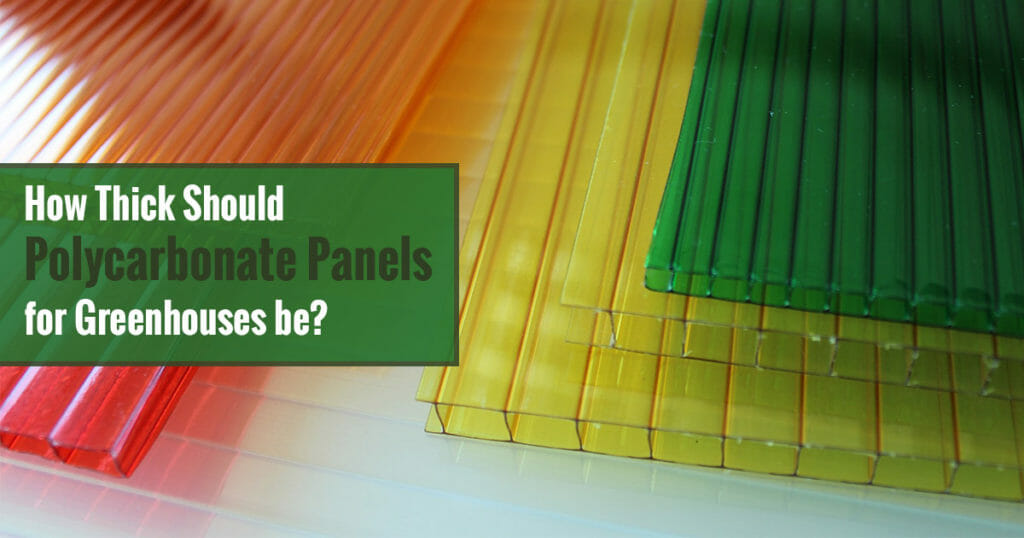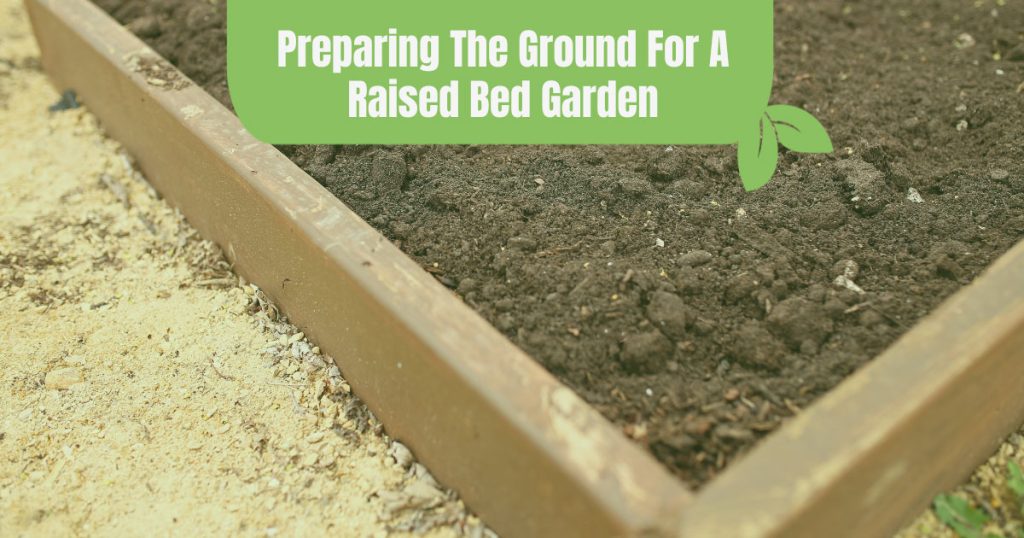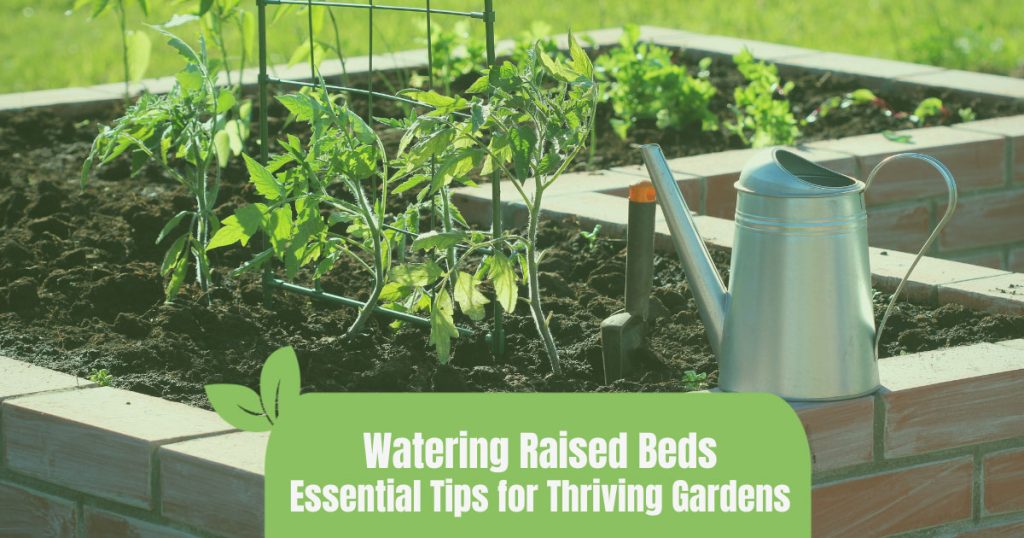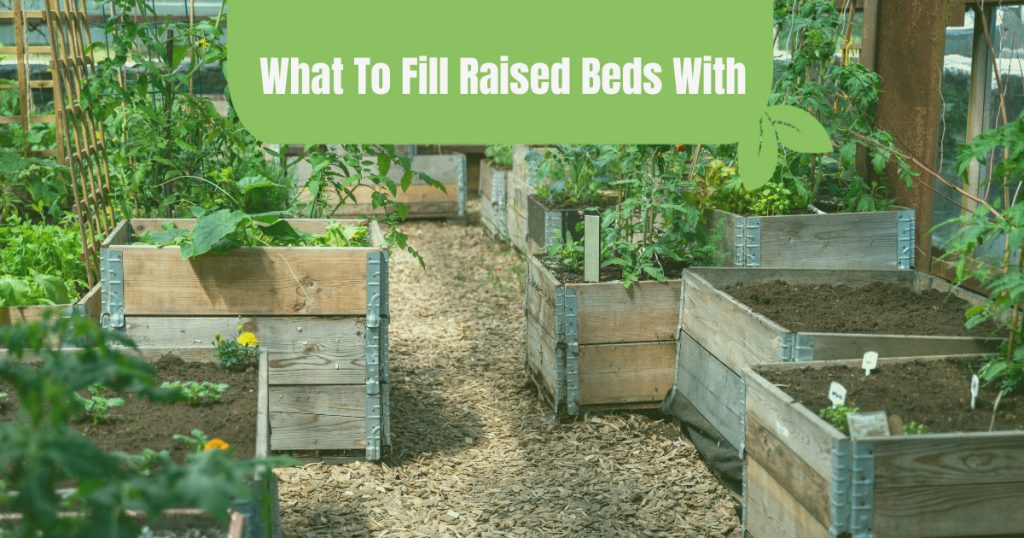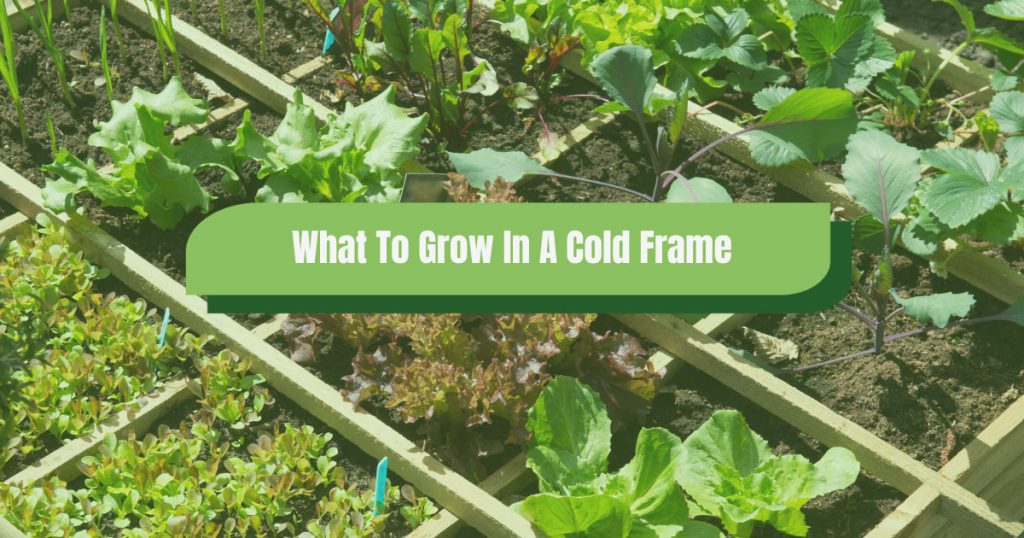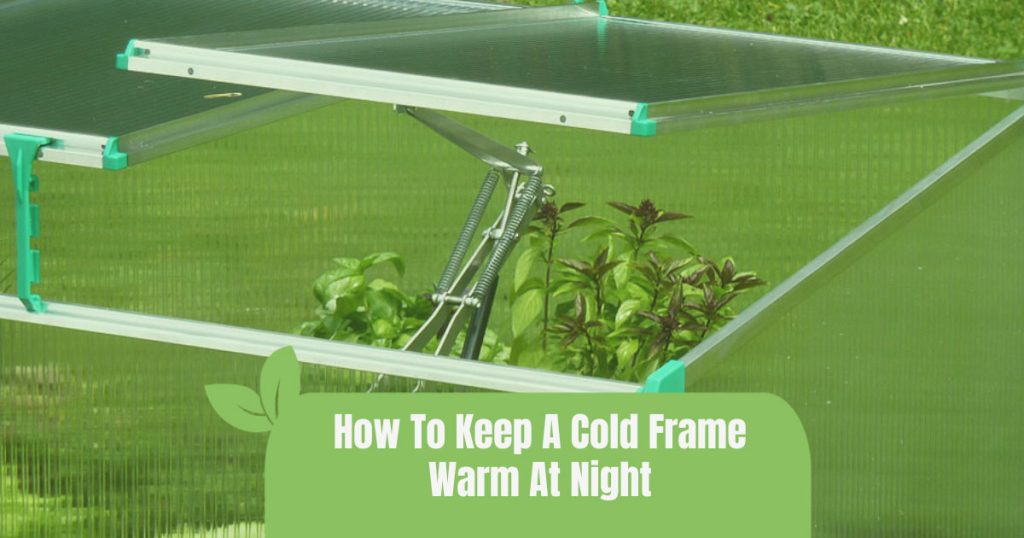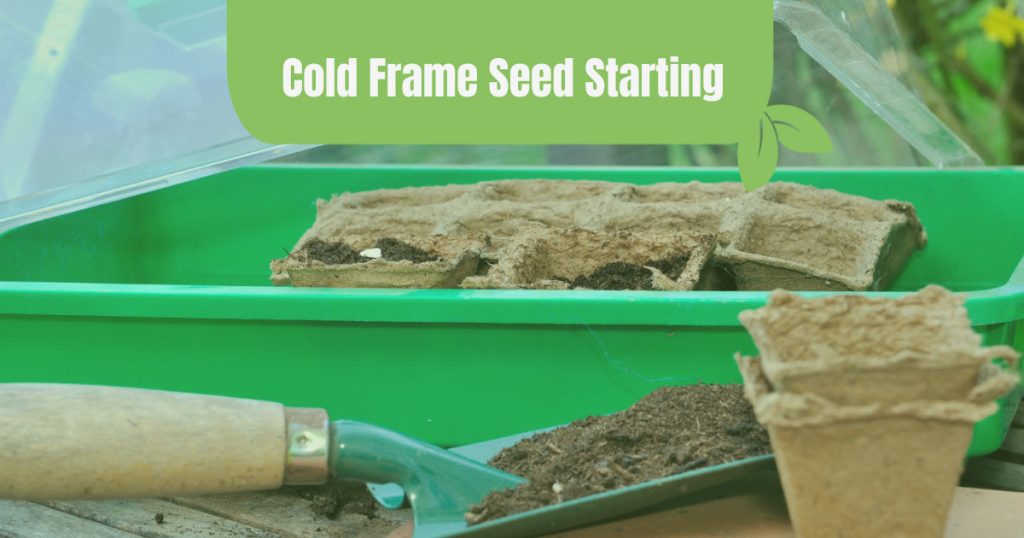
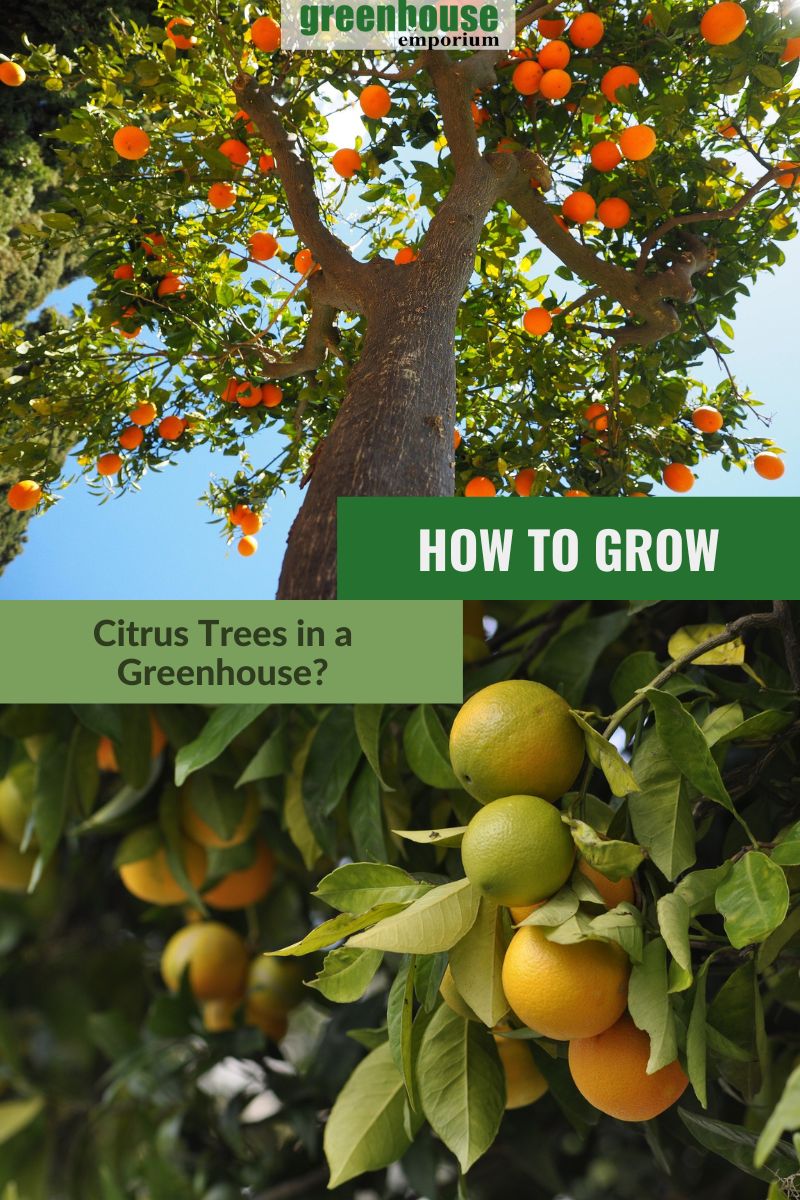
If you live in a part of the country that experiences freezing winters, chances are you’ll be hard-pressed to find locally grown lemons or oranges during the winter. But what if you could grow your own citrus fruit from the comforts of your own home?
In fact, citrus trees are the perfect candidate for greenhouse growing. By controlling factors such as planting, temperature, and humidity, you can set your citrus trees up for success in the greenhouse. Grown under the right conditions, citrus trees will not only thrive, but they’ll produce delicious fruit for years to come!
This is excellent news for greenhouse gardeners who live in areas where the climate is not ideal for outdoor citrus growing. Protecting your citrus trees during the winter allows you to enjoy these tropical fruits year-round. Keep reading to learn all of the tips to growing healthy citrus trees in a greenhouse!
How to pick the right citrus tree to grow in a greenhouse
Traditionally, a greenhouse designed to grow citrus trees was referred to as an orangery. That’s because in the past these types of greenhouses were often used to grow oranges, exotic fruits enjoyed by the wealthy. Today, an orange imported all the way from Spain is in many ways still a symbol of wealth.
It’s easier than ever to grow your own oranges, lemons, kumquats, or limes in a greenhouse. But before you go and purchase trees to plant in your greenhouse, you should consider different varieties, as well as the size of your greenhouse versus the size of the citrus tree you’d like to grow.
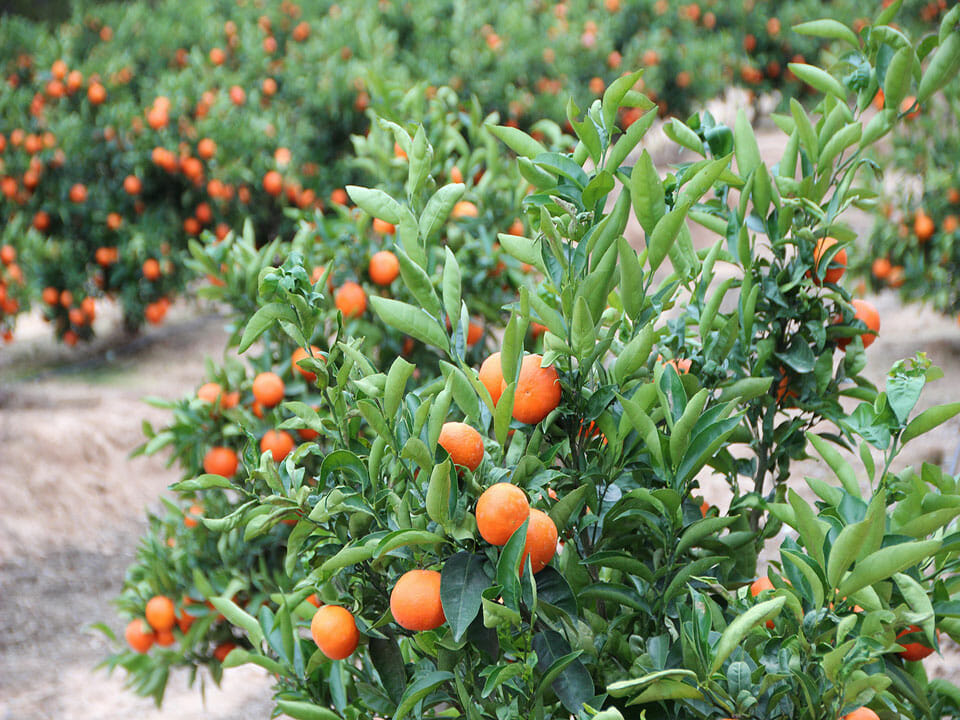
What size citrus tree should I choose?
Because greenhouses are all about maximizing space, we recommend choosing dwarf citrus trees.
Dwarf fruit trees grow smaller, yet still produce full-size fruit in abundance. While growing larger trees is possible in a big enough greenhouse, it’ll take a lot more maintenance and regular pruning. Plus, dwarf citrus trees are better suited to growing in pots, though they may require some kind of anchorage or staking.
What varieties of citrus do best in a greenhouse?
No matter what type of citrus tree you’re hoping to grow, there’s bound to be a variety that will grow well in your greenhouse. But choosing a variety can be tricky, since there’s so many out there. Luckily, most citrus trees are self-fruitful, so one tree is enough to produce fruit.
To make choosing a variety easier, we’ve put together a list of citrus trees that have been shown to perform particularly well in a greenhouse environment:
| Type of Citrus/Name | Botanical Name | Average Height |
|---|---|---|
| Lemons and Limes | ||
| Dwarf Lisbon Lemon | Citrus limon “Dwarf Lisbon” | 8-12 ft |
| Dwarf Bearss Seedless Lime | Citrus aurantifolia “Dwarf Bearss Seedless” | 6-8 ft |
| Improved Meyer Lemon | Citrus limon “Meyer Improved” | 6-10 ft |
| Oranges | ||
| Dwarf Washington Navel | Citrus sinensis “Dwarf Washington Navel” | 6-8 ft |
| Calamondin Orange | Citrus mitis | 10-20 ft |
| Dwarf Campbell Valencia Orange | Citrus sinensis “Dwarf Campbell” | 8-12 ft |
| Other Citrus Trees | ||
| Dwarf Kumquats | Fortunella spp. | 5-6 ft |
| Nagami Kumquats | Fortunella margarita | Up to 8 ft |
| Dwarf Red Blush Grapefruit | Citrus paradisi | 8-12 ft |
| Dwarf Dancy Tangerine | Citrus reticulata “Dancy” | 8-12 ft |
How to plant citrus trees in your greenhouse
When finding a permanent home for your citrus tree, you’ll have to choose between potting your citrus in a container or planting it directly into the ground. Most greenhouse gardeners will pot their dwarf citrus trees into containers because it offers more flexibility, but growing directly in the ground offers its own advantages, too.
Let’s take a look at both options below:
Planting in the ground
The most obvious advantage of planting your citrus trees directly in the ground inside of your greenhouse is that the roots have more room to spread, which often translates to bigger, healthier trees. On the flipside, once planted, you can’t easily move or relocate the citrus trees.
If you choose to plant your citrus tree in the ground, you may also have to contend with other plants growing in the soil. Weeds or trees (even trees outside of your greenhouse) can steal nutrients from the soil that your citrus tree needs. However, this shouldn’t be a big issue if you stay on top of weed management and don’t have too many large trees nearby sending their roots towards your greenhouse.
A final note of consideration for planting your citrus trees directly in the soil is that the roots will have more insulation from the cold during the winter. This is especially beneficial if you’re trying to limit heating costs.
Planting in a container
Dwarf citrus trees are surprisingly easy to grow in containers. The biggest benefit of doing so in the greenhouse is that you’ll be able to move your citrus trees around. Whether you’re reorganizing the greenhouse, or just want to put the citrus trees outside during the summer, having the trees in pots can be very handy.
Growing citrus trees in containers also reduces weed pressure. Since most citrus trees have shallow root systems that tend to sprawl outwards, staying on top of weeding is crucial.
If you’re potting your citrus tree in a container, ensure that the pot is sized appropriately with enough space for the roots to grow. Generally, citrus trees perform well in clay pots, but they’ll also do just fine in a plastic or ceramic pot as long as there is plenty of drainage.

How to care for citrus trees in a greenhouse
It may be surprising that citrus trees can be very easy to grow in greenhouses if given the right conditions and watered appropriately. In fact, citrus trees can be very prolific growers and produce fruit abundantly after just a few years in your greenhouse. If you want to see your citrus tree fruit sooner, you can purchase a more mature tree.
Since citrus trees are native to subtropical and tropical regions of Asia, they’ll thrive under warm, humid conditions. Mimicking these conditions in a greenhouse is fairly simple, but you’ll need to do some planning in order to set your citrus trees up for success.
Temperature
Growing citrus in a greenhouse is a great way to enjoy citrus if you live in Zone 8 or below, where they cannot be grown outdoors successfully.
The key to growing citrus trees in colder climates is preventing them from being exposed to freezing temperatures. While they can tolerate temperatures down to about 50°F, colder weather can cause the trees to drop leaves and fruit.
In general, most citrus trees grow best in temperatures between 70°F and 90°F. To keep the greenhouse above 50°F during the winter, you can harness geothermal energy, or add a gas or electric heater.
Humidity
In addition to warmer temperatures, citrus trees prefer close to about 50% humidity. If you live in a particularly dry climate, or experience dry winters, you can increase the humidity in your greenhouse with a humidifier or greenhouse misting system.

Light
Citrus prefer plenty of bright light, though you may have to monitor your citrus tree for signs of sunburn.
Depending on the variety of citrus you’re planting, you’ll want to face your citrus tree with the graft (which looks like a dimple or bump on the tree) facing north to protect it from the sun. This part of the tree is more sensitive to sunburn, so it’s essential to keep this in mind when planting or placing your citrus tree in your greenhouse.
You’ll want your citrus tree to receive about 8-12 hours of sunlight daily, so you may need to supplement with grow lights in the winter.
Water
Citrus trees prefer deep, less frequent watering. They’re susceptible to overwatering and do not like sitting in wet soil, so check that the soil has dried out before watering again.
However, it’s also important to make sure you don’t end up underwatering your citrus trees. If you’re unsure if your citrus tree is ready for a drink, you can get a moisture meter to monitor the moisture level of the soil.
You can water your citrus trees with rain water or filtered garden water. It’s best to water with tepid water so avoid shocking the roots with ice-cold water in the winter if possible.
Soil conditions
When planting your citrus trees, you’ll want to choose a high-quality, well-draining soil mix that is slightly acidic with lots of organic matter. Having well-draining soil is key to preventing root rot and overwatering. You can even mix a cactus blend with some topsoil and add chunky ingredients like perlite, vermiculite, bark chips, peat, and compost for nutrients.
Fertilizing
Liquid organic fertilizer is typically the best choice for citrus trees. Most citrus varieties prefer an NPK (nitrogen, phosphorus, potassium) ratio of 2-1-1. Ideally, your fertilizer will also have micronutrients such as iron and zinc, as citrus trees also prefer these nutrients.
For best results, feed your citrus trees regularly throughout the growing season, or as directed by the manufacturer. This helps ensure the proper development of leaves, flowers, and fruit.
Pruning
If your young citrus is producing plenty of fruit, but the fruit is small or tasteless, you may want to prune some of the fruit back in its early stages so your citrus can focus on growing larger and more delicious fruit. While it might be painful to prune away that fruit, your citrus will grow much larger and tastier fruit overall.
Dwarf citrus trees shouldn’t require much pruning of stems or branches in the first few years of growth, but you can prune them in the spring if you’re trying to achieve a particular shape or size.
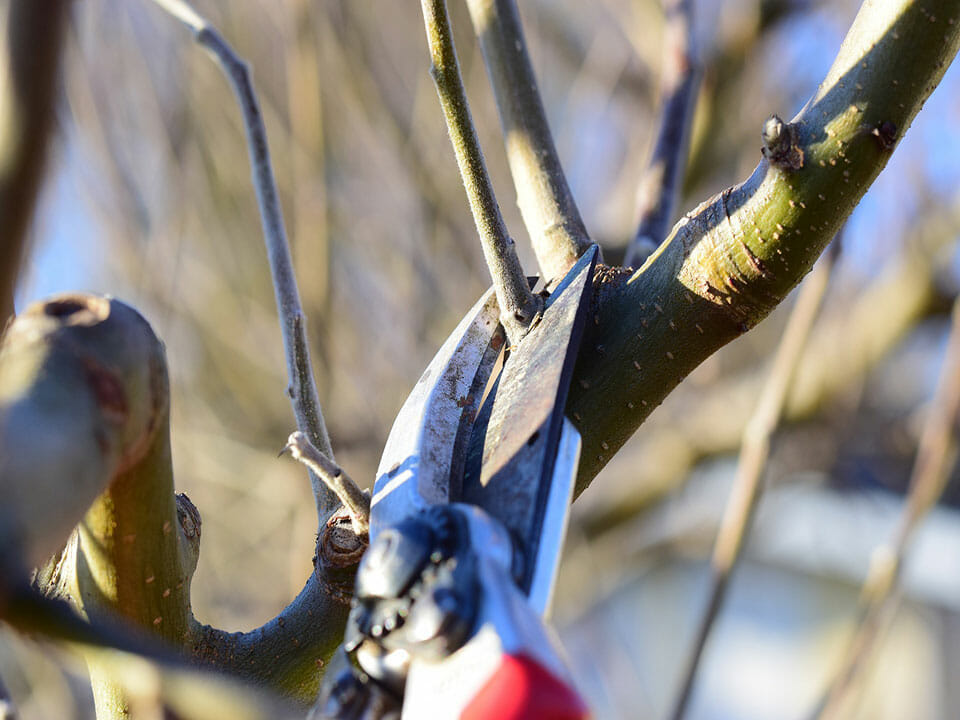
Common issues with growing citrus trees in a greenhouse
It would be great if we never encountered problems growing in the greenhouse, but it can happen! As long as you prepare and investigate, most challenges you face with your citrus tree will have a straightforward solution.
Yellow leaves
If you notice that your citrus tree has some yellowing leaves, you’ll want to investigate the cause as soon as possible. If the leaves are also curling, the tree might be under distress such as overwatering or underwatering.
If the soil is bone dry, your citrus tree might be undergoing drought stress. Give your citrus trees a deep watering, and observe for signs of improvement. On the other hand, soggy soil points towards overwatering, in which case you should cut back watering immediately.
If the overwatering is severe enough, your citrus tree may even have a bit of root rot. In this case, you can re-pot the tree, adding new well-draining soil and trimming away rotted roots. If your tree is planted in the soil, simply wait to allow the soil to drain properly before watering again.
However, yellowing leaves could also mean a nitrogen deficiency. Deficiencies are more common during late winter through spring when your citrus has depleted its reserves. To fix this issue, add a bit of nitrogen-rich fertilizer and more organic matter to the soil.
Common citrus pests
While growing citrus trees in your greenhouse will help keep many outdoor pests at bay, pests can still happen to the best of us. Thrips are one of the more common pests that can damage your citrus tree, but you may encounter others.
A few pests that are particularly attracted to citrus trees include:
- Scale
- Aphids
- Fungus gnats
- Whiteflies
- Mealybugs
- Spider mites
When dealing with citrus tree pests, neem oil can be an effective solution. It’s best to treat plants in the morning or evening to prevent burning. Spray down your citrus tree with a neem oil mixture to repel and kill the pests before they become an infestation.
Common citrus diseases
Fungi, bacteria or insects can all spread diseases to your citrus trees. While citrus trees are susceptible to diseases such as Anthracnose, Blight, and Bacterial Blast, Sooty mold is the most common disease you will likely encounter.
Sooty mold is primarily transferred by aphids, who leave sticky honeydew on the leaves. It’s easy to identify sooty mold as black streaks on the leaves. If left untreated, it can impact leaf growth and fruit production. You can treat sooty mold by pruning the affected leaves and getting rid of the pests that have caused it in the first place.

